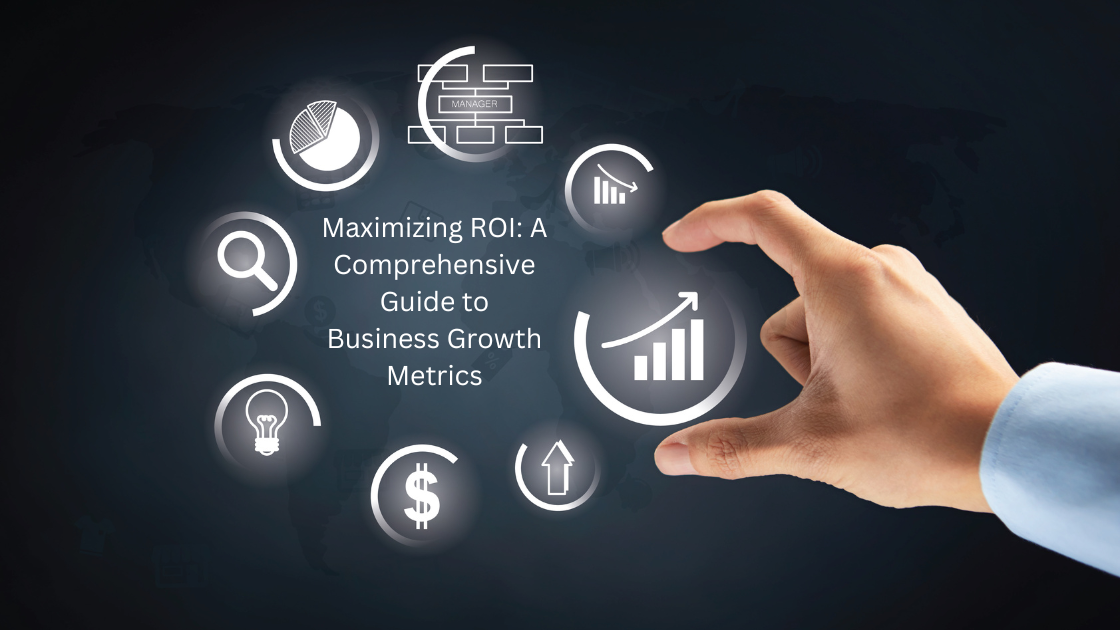Maximizing return on investment (ROI) is a critical objective for any business seeking sustainable growth. To achieve this, companies must focus on a comprehensive set of business growth metrics that provide insights into performance, efficiency, and profitability. By understanding and leveraging these metrics, businesses can make data-driven decisions that optimize resources, enhance customer satisfaction, and drive long-term success.
Revenue Growth
Revenue growth is a fundamental metric that measures the increase in a company’s sales over a specific period. This metric indicates the effectiveness of sales strategies, market expansion efforts, and product or service offerings. Analyzing revenue growth trends helps businesses identify what drives sales and areas where improvement is needed, such as targeting new customer segments or enhancing marketing efforts.
Profit Margins
Profit margins, including gross, operating, and net profit margins, provide a clear picture of a company’s profitability. Gross profit margin assesses the efficiency of production processes by comparing revenue to the cost of goods sold (COGS). Operating profit margin considers operating expenses, while net profit margin reflects the overall profitability after all expenses, taxes, and interest. Monitoring these margins helps businesses identify cost-saving opportunities and areas where they can improve operational efficiency.
Customer Acquisition Cost (CAC)
CAC measures the cost of acquiring a new customer, including expenses related to marketing, sales, and onboarding. A lower CAC indicates that a business is efficiently attracting customers. To maximize ROI, businesses should aim to reduce CAC while maintaining or improving the quality of customer acquisition. Strategies such as optimizing marketing campaigns, enhancing targeting, and improving conversion rates can help achieve this balance.
Customer Lifetime Value (CLV)
CLV estimates the total revenue a business can expect from a single customer over the duration of their relationship. A higher CLV indicates that customers are contributing more value over time, which can offset the costs of acquisition. Businesses can increase CLV by enhancing customer retention strategies, providing exceptional customer service, and offering upsell or cross-sell opportunities.
Churn Rate
Churn rate measures the percentage of customers who stop doing business with a company over a specific period. A high churn rate can erode revenue and profitability, making it crucial to address customer dissatisfaction or competitive pressures. Businesses can reduce churn by improving customer engagement, offering loyalty programs, and proactively addressing customer concerns.
Return on Advertising Spend (ROAS)
ROAS assesses the effectiveness of advertising campaigns by comparing the revenue generated from ads to the amount spent on them. A higher ROAS indicates that advertising efforts are yielding significant returns. By analyzing ROAS, businesses can optimize their ad spend, focus on high-performing channels, and refine their messaging to improve campaign outcomes.
Conversion Rate
Conversion rate measures the percentage of users who take a desired action, such as making a purchase or signing up for a service, after interacting with a business’s marketing or sales channels. A higher conversion rate signifies effective marketing and sales strategies. Businesses can enhance conversion rates through A/B testing, improving website usability, and crafting compelling calls to action.
Inventory Turnover
Inventory turnover indicates how efficiently a business manages its inventory by measuring how often stock is sold and replaced over a specific period. A higher turnover rate suggests effective inventory management and strong sales. Businesses should monitor this metric to avoid overstocking or stockouts, both of which can impact profitability.
Employee Productivity
Employee productivity measures the output of employees relative to the input costs, such as salaries and benefits. High productivity indicates that employees are efficiently contributing to business goals. Businesses can enhance productivity by investing in training, fostering a positive work environment, and providing the necessary tools and resources.
Net Promoter Score (NPS)
NPS gauges customer satisfaction and loyalty by asking customers how likely they are to recommend the business to others. A higher NPS indicates strong customer satisfaction and can predict future growth through word-of-mouth referrals. Businesses can improve NPS by focusing on customer experience, addressing feedback, and consistently delivering value.
In conclusion, maximizing ROI requires a comprehensive understanding and strategic use of key business growth metrics. By regularly monitoring and analyzing these metrics, businesses can identify strengths, uncover opportunities for improvement, and make informed decisions that drive sustainable growth and profitability.
